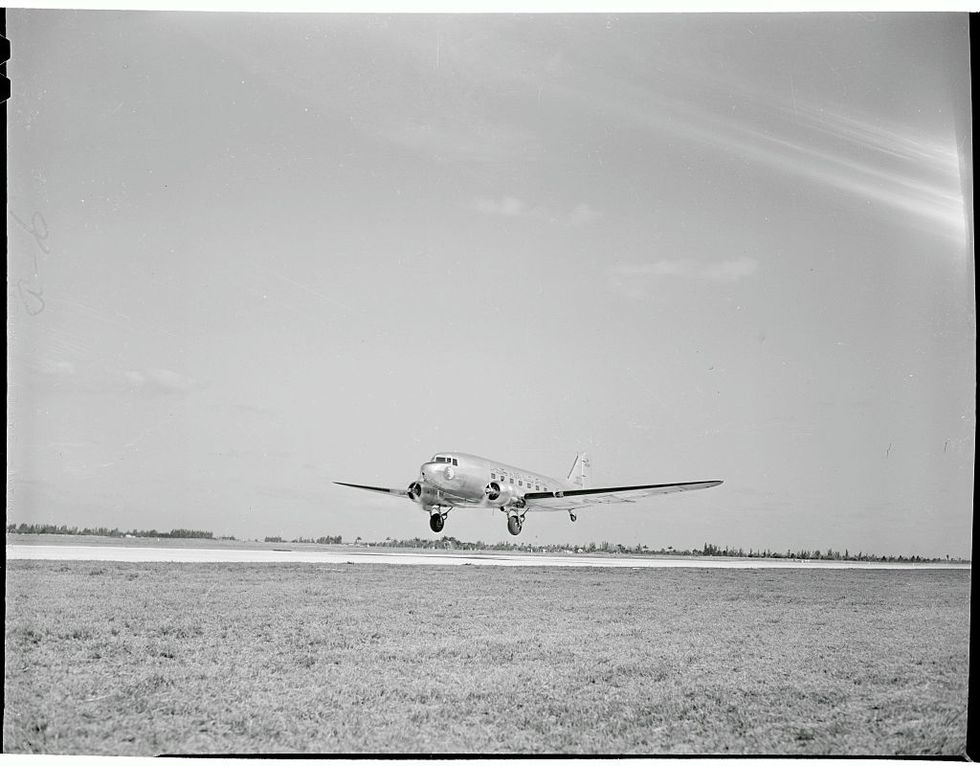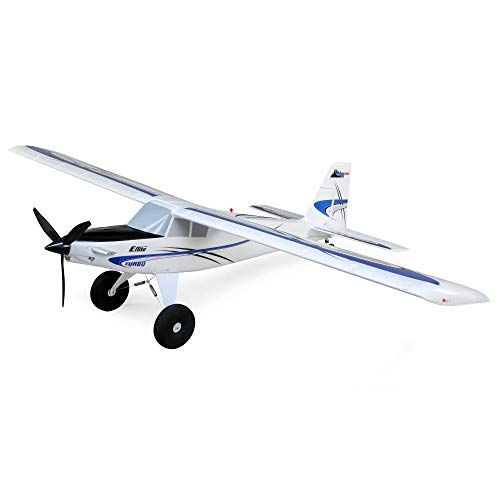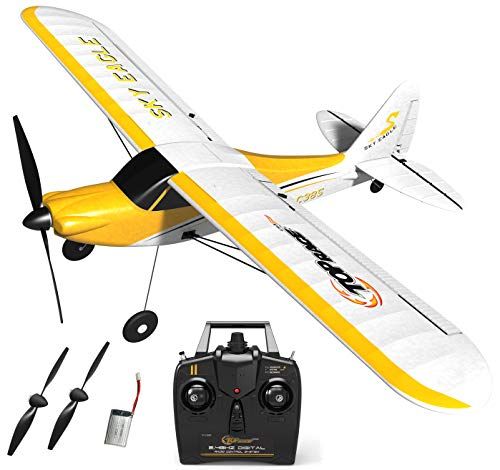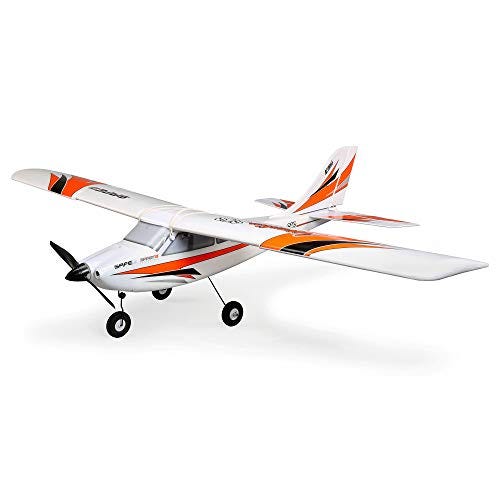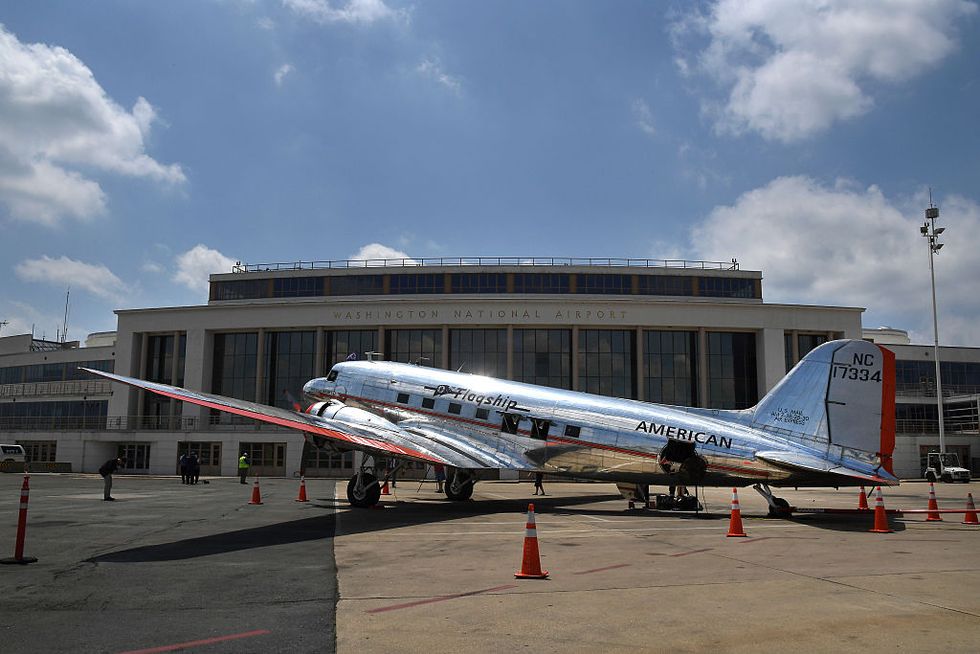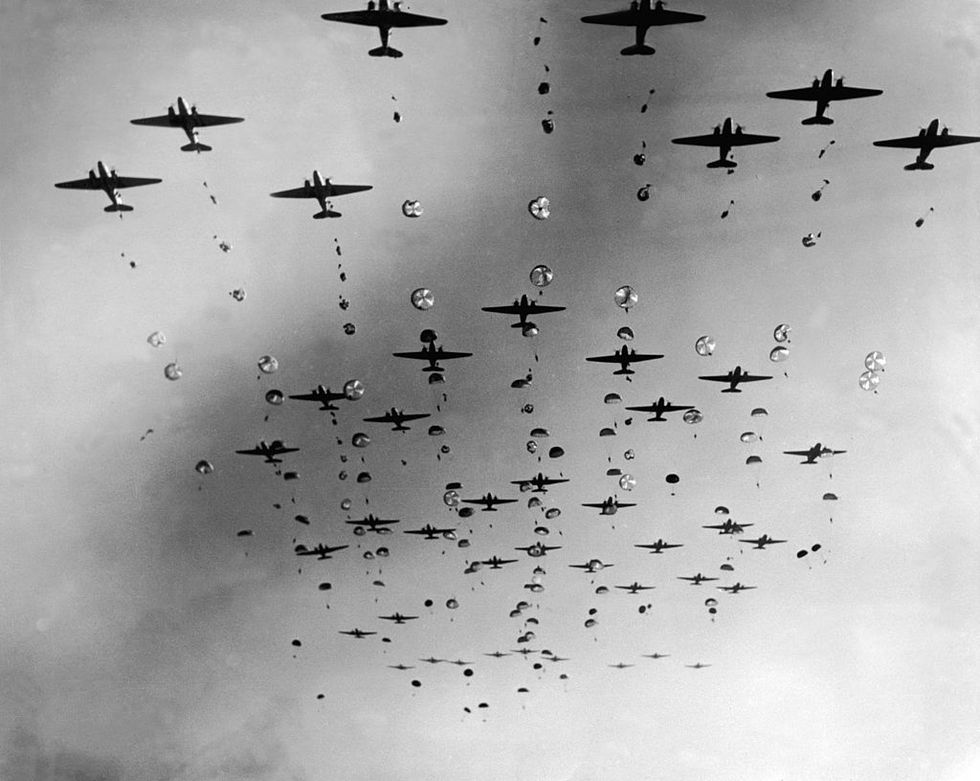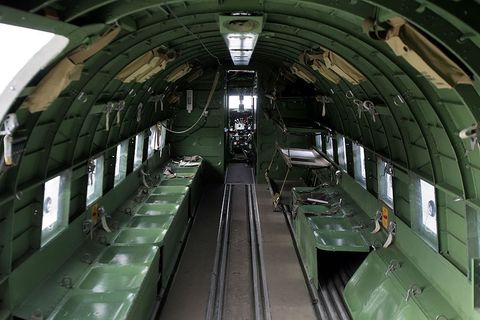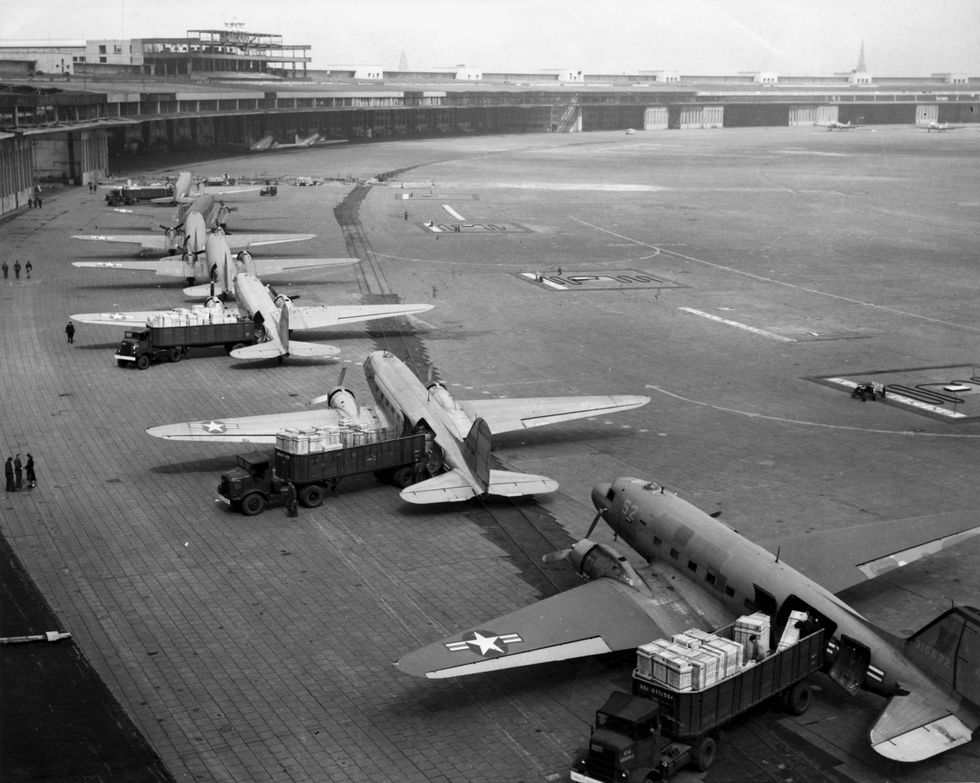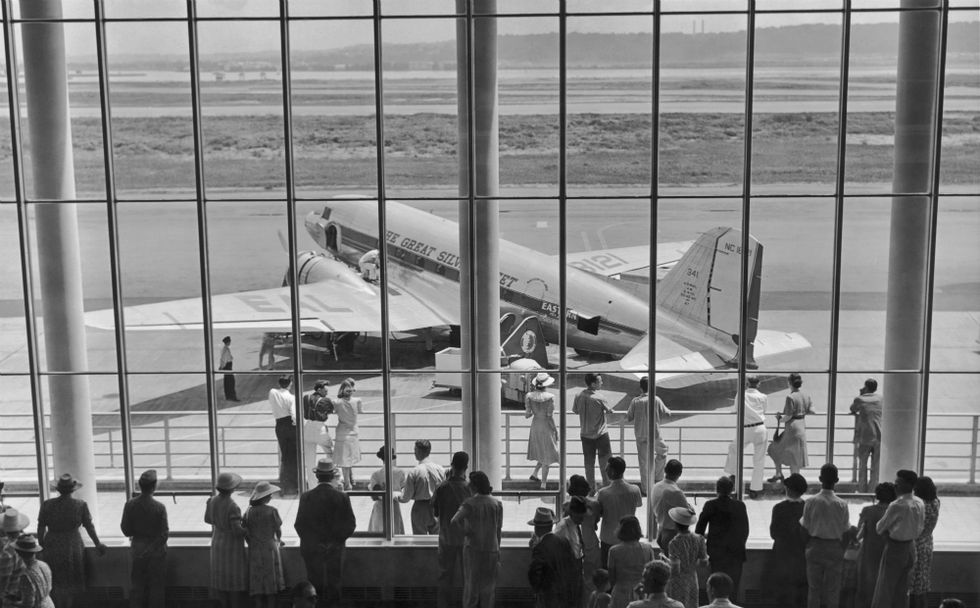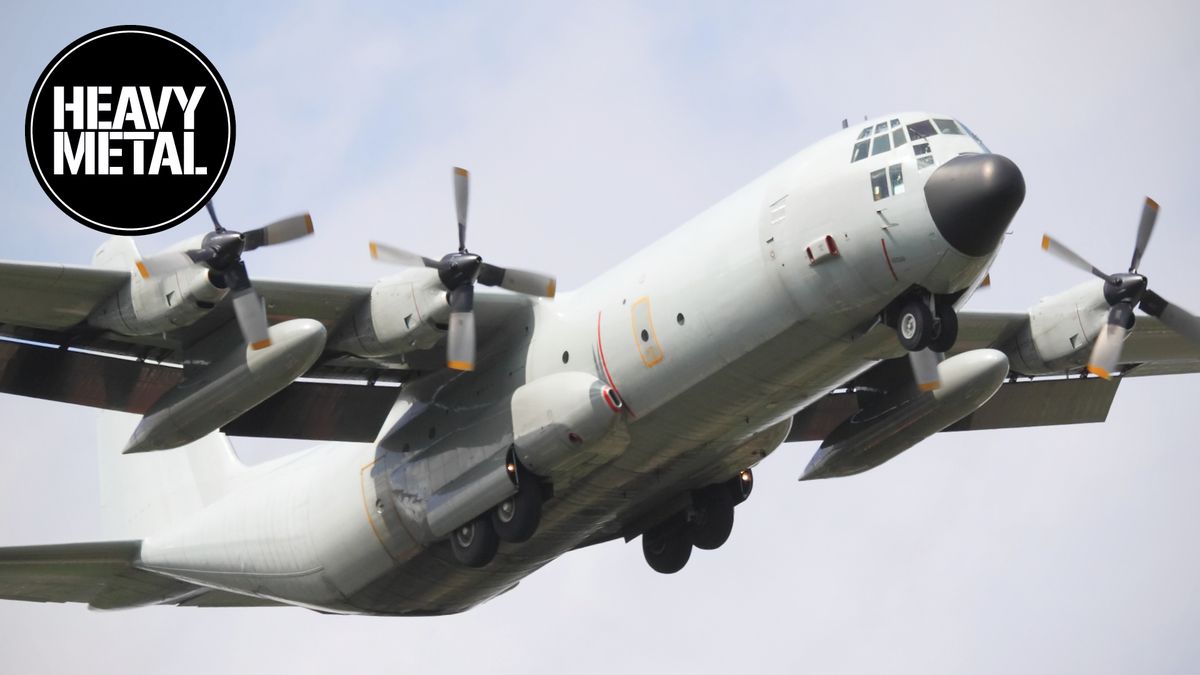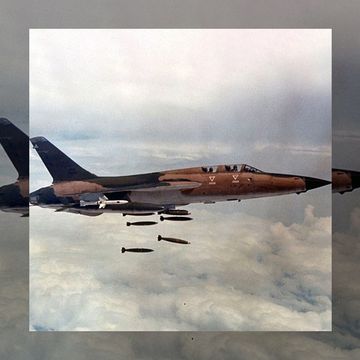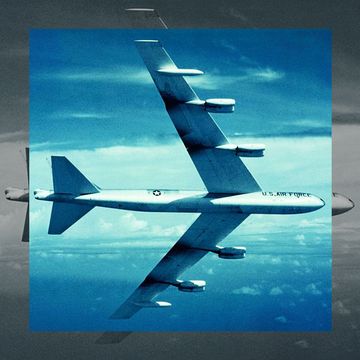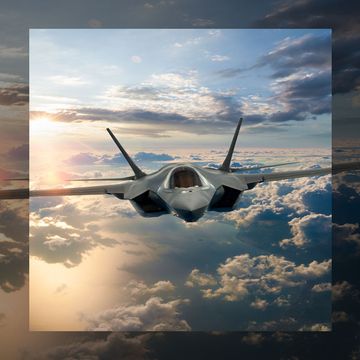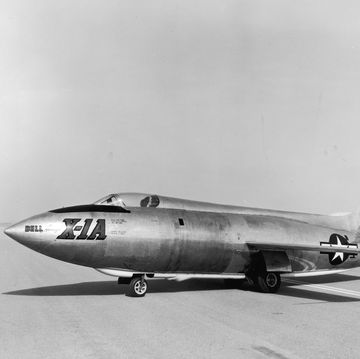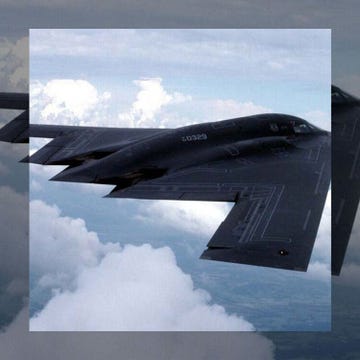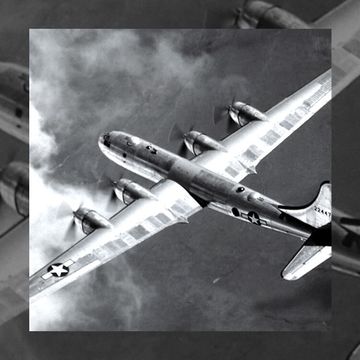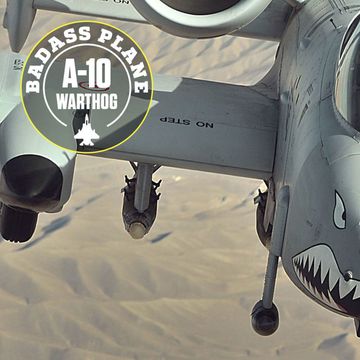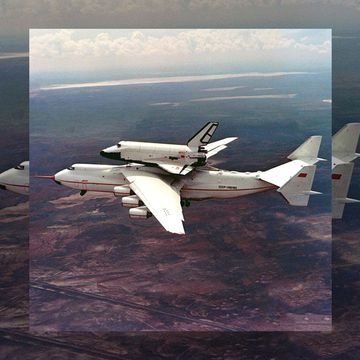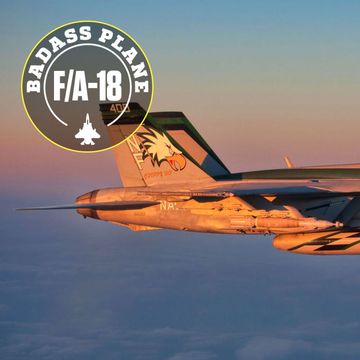On a spring morning in 1966, North Central Airlines flight 787 departed Eppley Field at Omaha, Nebraska, en route to Grand Forks, North Dakota, with seven stops along the way. On its first leg to Norfolk, Nebraska, the airplane cruised at a leisurely 155 miles per hour (mph).
Everything was routine until a sudden backfire startled captain Al Bergum and co-pilot Tom Truax. Black smoke and flames poured from the left engine nacelle. As Bergum rushed to shut down the engine and feather the propeller, the crew actuated the single-shot engine fire extinguisher. Still, the fire burned.
Fifteen miles short of Norfolk airport, Bergum and Truax faced a tough decision: try to make it to the runway, or land in a farmer's field with 26 passengers and three crew on board.
The captain decided to put the plane down in the alfalfa patch. Luckily, it was a plane designed for this very situation. The commercial aviation icon, the war hero, and the aerial workhorse—the Douglas DC-3.
Hatching the "Gooney Bird"
There are thousands of stories about the DC-3. From "Gooney Bird" and "Dumbo" to "Spooky" and "Puff The Magic Dragon," at least two dozen nicknames testify to its versatility and ruggedness. More than 16,000 DC-3s and military version C-47s were built in 50-plus variants. More than 300 are still flying today.
The DC-3 was born into a still-nascent commercial air travel industry—and traveling by air was much riskier and arduous before the DC-3 came along. The first airline flight in America was a 23-minute jaunt across Tampa Bay in 1914, on which a single passenger joined the pilot in a noisy, windy open-cockpit Benoist flying boat.
By the 1920s, the Ford Trimotor reliably carried 13 passengers coast to coast, but its limited range (570 mi), slow cruising speed (100 mph), and modest instruments meant that the trip took 48 hours (though not all of it was aboard the Trimotor). In comparison to these early flights, the DC-3 was a quantum leap forward.
✈ The Most Fun RC Planes for Aviation Enthusiasts
The Douglas Aircraft Company built the "Douglas Commercial 3" based on the 1933/34 Douglas DC-1 and DC-2. Around that time, American Airlines CEO C. R. Smith persuaded Donald Douglas to design a sleeper aircraft based on the DC-2 for long-distance flights. With a cabin two feet wider than the DC-2, it accommodated 14 to 16 sleeper berths or 21 passenger seats.
The new airliner first flew on December 17, 1935, and its expanded dimensions perfectly balanced load and revenue. Transcontinental trips from L.A. to New York could be made in about 15 hours, or 17 hours in the other direction. As Flying magazine puts it, the DC-3 married reliability with performance and comfort as no other airplane before, revolutionizing air travel and finally making airlines profitable. Airlines like TWA, Delta, American, and United ordered entire fleets of DC-3s, finally establishing the airplane as the go-to method for long-distance travel.
Then came war.
Becoming a World War Legend
The onset of WWII saw the last civilian DC-3s built in early 1943. Most were pressed into military service, and the C-47 (or Navy R4D) began rolling out of the company's Long Beach plant in huge numbers. It differed from the DC-3 in many ways, including the addition of a cargo door and strengthened floor, a shortened tail cone for glider-towing shackles, and a hoist attachment. In 1944, the Army Air Corps converted a DC-3 into a glider (XCG-17), and it significantly outperformed the gliders towed by C-47s on D-Day. C-47s served in every theater.
Large numbers of C-47s were freed for use after the war, but airlines swiftly adopted larger, faster DC-4s and DC-6s for main routes. Smaller regional airlines like North Central eagerly snapped up DC-3s sold off by major airlines, while surplus C-47s became an armada of cargo freighters, building the airplane's reputation for being able to carry just about anything you could fit through the door.
Douglas made a longer, more powerful, and faster DC-3S or "Super DC-3" in the late 1940s, meeting with little airline sales success though taken up by the Navy and Marines as the R4D-8/ C-117D.
But really, the basic DC-3/C-47 configuration was so good, it needed little improvement. Its two Pratt & Whitney R-1830 Twin Wasp 14-cylinder radial engines produce 1200 hp each, providing thrust enough to lift 20-plus passengers and baggage or a 6,000-plus pound cargo load. Cruising at 160 to 180 mph, the DC-3 can fly about 1,600 miles, land in less than 3,000 feet, and take off again in less than 1,000 feet. Its low-speed handling and toughness made it the go-to airplane for a myriad of jobs including military special operations.
That included going back to war. In response to increased attacks by Viet Cong on rural South Vietnamese outposts in Vietnam in 1963, American Air Commandos began assisting the defense of small villages at night by using their C-47 transport aircraft to fly in circles and drop illumination flares, exposing attackers to the defending troops. The practice inspired the idea of fitting the C-47s with firepower and ultimately an Air Force effort called Project Gunship I.
The Air Force modified several C-47s by mounting three 7.62 mm General Electric miniguns to fire through two rear window openings and the side cargo door, all on the left side of the aircraft. A gunsight was mounted in the left cockpit window. Orbiting a target at 3,000 feet and 140 mph, the modified "AC-47" could put a bullet into every square yard of a football field-sized target in three seconds.
Another C-47, used as a leaflet-dropping, loudspeaker-equipped psychological warfare aircraft in Vietnam was unofficially called the "Bullshit Bomber."
Captain Ron W. Terry, an Air Force counterinsurgency warfare expert, led a team from the 4th Air Commando Squadron that flew the first AC-47 missions in December, 1964. They were the first of many between late 1964 and early 1969, during which over 6,000 hamlets and firebases came under the protective cover of AC-47s. Not one fell while the aircraft was overhead. Terry returned to the States in 1965 bringing with him information that would lead to development of the AC-130 Hercules.
The Carry-Anything Cargo Plane
By the early 1960s, turboprop airliners like the Convair 580 surpassed the DC-3s efficiency as a regional airliner. They could operate from the same short runways as the DC-3 with similar fuel consumption but at greater range, speed, and the added comfort of a pressurized cabin. In an era when Americans were flying to space, paying for an airline flight on a DC-3 seemed increasingly odd.
Despite vanishing from all but a few airline fleets, DC-3s were still ubiquitous in the 1970s and 80s, often seen on airport ramps alongside 747s and DC-10s working as cargo aircraft and freight forwarders. They fought forest fires as air tankers, brought odd-size cargo to metropolitan markets, and were the aircraft of choice for drug cartels. However, one of the C-47's most famous cargo jobs was supplying the city of Berlin with food during the Berlin Airlift, along with other aircraft like the C-54 Skymaster and the C-74 Globemaster.
The DC-3 remained on military duty until 2008—72 years—until the Air Force's 6th Special Operations Squadron finally retired its turbine-powered Gooney. Other DC-3s continue to fly missions as sensor development testbeds for the military and as freighters with companies like Canada's Buffalo Airways.
Nearly 100 countries have operated DC-3s, and long-forgotten airplanes still surface, including a wrecked C-47 discovered in northern Siberia in the spring of 2016. In addition to airliners and freighters, DC-3/C-47s have flown as VIP and executive transports, electronic intelligence gatherers, float planes, air ambulances, Antarctic research aircraft, and gunships, to name a few.
Perhaps the best way to refer to a DC-3 is simply to call it a legend. People still scramble for a flight in one at airshows, and in remote areas, the arrival of a Gooney means help and support. It's simple, rugged, and surprisingly relevant to this day.
One Story, Thousands More
On that spring morning back in 1966, Captain Bergum likely knew the storied history of his wounded aircraft as it limped across a Nebraskan sky. As he began his descent to reduce the chances of cartwheeling during the single-engine landing, Bergum kept the landing gear up. When fully retracted, the DC-3's wheels still protruded from the underneath the airplane, providing a mild buffer in an emergency landing. Just before the field, he closed the throttle on the remaining engine.
Brushing—then plowing—through the green alfalfa crop, the DC-3 was cushioned by the thick vegetation. As it settled, both propellers dug into the soil, the tailwheel making slight contact as the airplane slid to a swift, straight stop.
Crew and passengers clambered out unharmed to the sound of an approaching John Deere tractor and wagon. Farmer David Dicke had seen the DC-3 straining to land from his kitchen. He invited the passengers back to his farmhouse for coffee and cookies. Bergum and Truax secured the airplane and assessed the damage.
Aside from needing new engines and props, the DC-3 was largely unharmed. Transport to Norfolk airport was quickly arranged and, amazingly, all the passengers chose to resume the flight on another North Central DC-3.
Several days later, the farmer cut a swath through his field and another crew jumped in the airplane, flying the airliner out of the alfalfa to the nearby airport, and a couple weeks later, it was back in service.


